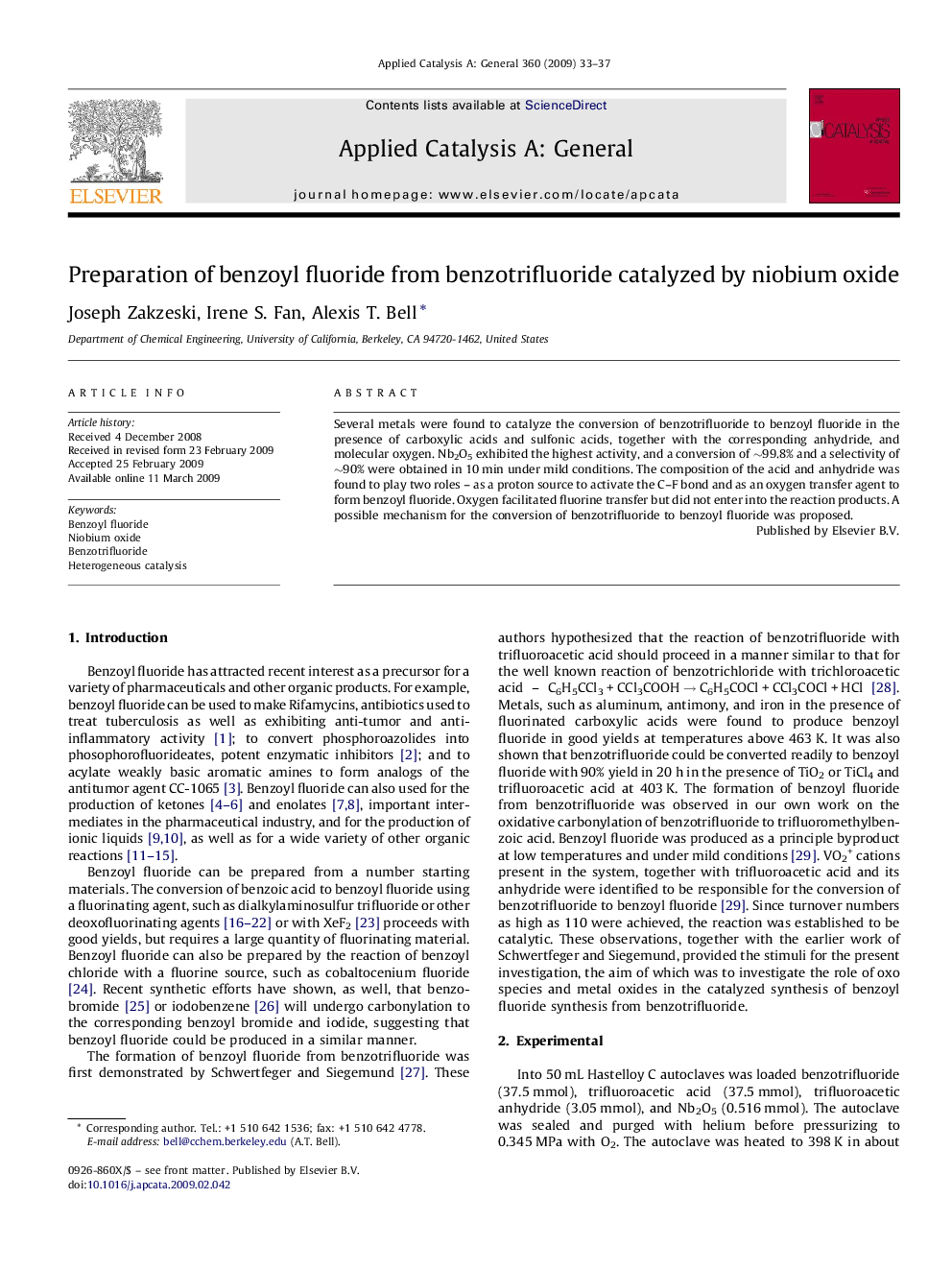| Article ID | Journal | Published Year | Pages | File Type |
|---|---|---|---|---|
| 42738 | Applied Catalysis A: General | 2009 | 5 Pages |
Several metals were found to catalyze the conversion of benzotrifluoride to benzoyl fluoride in the presence of carboxylic acids and sulfonic acids, together with the corresponding anhydride, and molecular oxygen. Nb2O5 exhibited the highest activity, and a conversion of ∼99.8% and a selectivity of ∼90% were obtained in 10 min under mild conditions. The composition of the acid and anhydride was found to play two roles – as a proton source to activate the C–F bond and as an oxygen transfer agent to form benzoyl fluoride. Oxygen facilitated fluorine transfer but did not enter into the reaction products. A possible mechanism for the conversion of benzotrifluoride to benzoyl fluoride was proposed.
Graphical abstractNb2O5 was found to catalyze the conversion of benzotrifluoride to benzoyl fluoride in the presence of carboxylic acids, together with the corresponding anhydride, and molecular oxygen. The composition of the acid and anhydride were found to play two roles – as a proton source to activate the C–F bond and as an oxygen transfer agent to form benzoyl fluoride.Figure optionsDownload full-size imageDownload as PowerPoint slide
